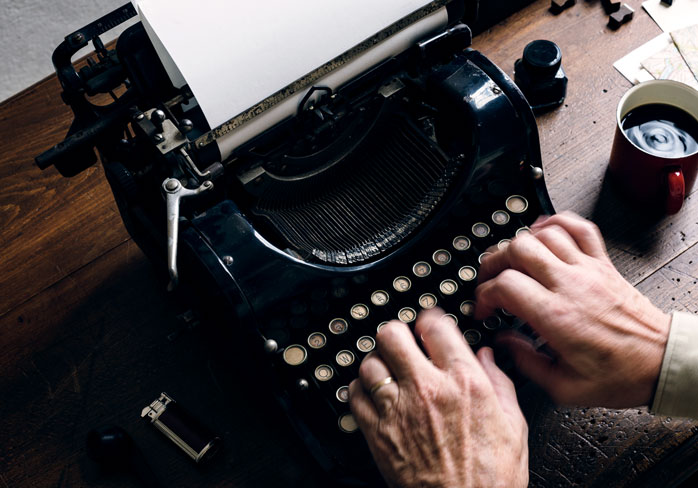

 [/wlm_stripe_btn]
[/wlm_stripe_btn]Keyword research and SEO is so easy to get it wrong.
But knowing the secret powers of Google Bard makes the task fast, easy, and relevant and highly targeted.
Learn how to put the power of Bard to work to turn you into a marketing guru.


 [/wlm_stripe_btn]
[/wlm_stripe_btn] [/wlm_stripe_btn]
[/wlm_stripe_btn]
Writing for your blogs, articles, essays, and videos is hard. There’s no denying it.
When you know how to use Google’s Bard, writing becomes easy, fast, thorough, targeted, unique, and grammatically correct.

Internal and external linking can take hours, And let’s not even talk about the research! But Bard automagically does all the hard work for you.
Put the power of Bard to find internal and external links and keep you fully SEO optimized.


Impactful, engaging, YouTube Shorts scripts are suddenly really easy to create with Bard. Just like the one to the left.
Learn how to use Google’s Bard, to write impactful, engaging, and targeted YouTube Shorts scripts.

 [/wlm_stripe_btn]
[/wlm_stripe_btn]In today’s competitive digital landscape, content is king. But crafting high-quality content that resonates with your audience and drives results can be a time-consuming and daunting task. That’s where Google’s Bard comes in.
Google Bard is a revolutionary AI writer assistant that empowers you to create exceptional content in minutes, without sacrificing quality or originality. With Bard, you can:
Generate high-quality articles, blog posts, video scripts, novels, books, papers, and more with just a few clicks.
Spend less time writing and more time on the things that count or are a lot more fun..
Achieve higher rankings in search results and reach a wider audience with the power of AI suggested keywords, hashtags, and more.
Unleash your ideas and explore new angles with Bard's AI-powered brainstorming and keyword research tools.
Over 50 Lessons & Easy To Follow Step-by-Step Videos
 [/wlm_stripe_btn]
[/wlm_stripe_btn]

The aroma of freshly brewed coffee has the power to awaken our senses and transform a mundane morning into a moment of pure indulgence. But what exactly goes into creating that perfect cup of coffee, the one that dances on our taste buds and leaves us craving more? The answer lies not just in the quality of the coffee beans or the skill of the barista, but also in a delicate dance of scientific principles that govern the brewing process.
At the heart of coffee brewing lies the concept of extraction, the process by which water dissolves flavor compounds from the coffee grounds into the brewed beverage.
This intricate dance of solubility is influenced by various factors, including water temperature, grind size, and brewing time.
Water temperature plays a crucial role in determining the extraction yield, the amount of flavor compounds extracted from the beans. Too hot, and the delicate flavor compounds may be over-extracted, resulting in a bitter, harsh brew. Too cold, and the flavor compounds may be under-extracted, giving the coffee a weak, sour taste. The ideal water temperature falls between 90°C and 96°C, allowing for optimal extraction of the desired flavor profile.
Grind size is another critical factor, influencing the surface area of the coffee grounds exposed to water. A finer grind provides more surface area, allowing for faster extraction and a richer, bolder flavor. However, too fine a grind can lead to over-extraction, producing a bitter brew. Conversely, a coarse grind results in slower extraction, producing a weaker, more acidic coffee.
Brewing time also plays a role in extraction, though its influence is less pronounced than water temperature and grind size. A longer brewing time allows more flavor compounds to be extracted, but it can also lead to over-extraction, particularly if the water temperature is too high or the grind size is too fine.
Beyond these mechanical factors, the origin of the coffee beans also plays a significant role in determining the flavor profile. Arabica beans, originating from Central and South America, are known for their delicate acidity, floral notes, and complex flavors. Robusta beans, grown primarily in Africa and Southeast Asia, are characterized by their stronger bitterness and nutty, chocolatey tones. The specific flavor profile of a cup of coffee is determined by the unique interplay of these factors, creating a symphony of taste and aroma that can vary from bean to bean and brewing method to brewing method.
The symphony of flavors and aromas in coffee is a result of a complex interplay of over 800 chemical compounds, each contributing to the overall experience. These compounds, collectively known as coffee volatiles, are released during the roasting process and further extracted during brewing.
Among the key flavor compounds are:
Acids: Tartaric acid, malic acid, and citric acid contribute to the acidity, tartness, and refreshing quality of coffee.
Alkaloids: Caffeine, theobromine, and theophylline are responsible for the stimulating effects of coffee.
Organic acids: Hydroxycinnamic acids, such as chlorogenic acid and caffeic acid, contribute to the bitterness and astringency of coffee.
Volatile aromatic compounds: These compounds, including pyrazines, furans, and ketones, provide the rich, complex aroma of coffee.
The specific combination of these compounds varies depending on the coffee bean variety, origin, roasting profile, and brewing method. This diversity is what gives coffee its endless range of flavors and aromas, allowing us to savor the nuances of each cup.
With a plethora of brewing methods to choose from, each with its unique characteristics, the pursuit of the perfect cup of coffee becomes a journey of discovery. From the simplicity of pour-over to the richness of French press, each method offers a distinct flavor profile and brewing experience.
Pour-over: This elegant method involves slowly pouring hot water over freshly ground coffee, allowing for a balanced extraction and a clean, nuanced flavor profile.
French press: Characterized by its bold, full-bodied flavor, French press involves steeping coarsely ground coffee in hot water, resulting in a rich, intense brew.
Espresso: Originating from Italy, espresso is a concentrated coffee beverage made by forcing hot water under pressure through finely ground coffee. Its intense flavor and thick crema are the foundation of many popular coffee drinks.

Cold brew: This unique method involves steeping coarsely ground coffee in cold or room-temperature water for an extended period, resulting in a smooth, low-acidity brew with a mellow, almost chocolaty flavor.
The quality and origin of coffee beans are the foundation of a great cup of coffee.
Arabica beans, prized for their delicate flavors and aromas, account for over 60% of the world’s coffee production. These beans are typically grown at higher altitudes, where the cooler temperatures and longer growing seasons contribute to their complex flavor profiles.
Robusta beans, known for their stronger bitterness and nutty, chocolatey notes, are more resilient to pests and diseases, making them more affordable than Arabica beans. These beans are often blended with Arabica beans to add body and depth to the flavor profile.
Coffee beans from different regions of the world also exhibit distinct flavor characteristics, influenced by the unique terroir, or growing conditions, of each region. For instance, coffee from Ethiopia is often characterized by its bright acidity and floral notes, while coffee from Indonesia is known for its smoky, earthy flavors.
When selecting coffee beans, it’s important to consider the ethical and sustainable practices employed by the producers. Fair trade coffee guarantees farmers receive fair compensation for their crops, while organic coffee is grown without the use of harmful chemicals and pesticides.
To ensure you’re always enjoying freshly roasted, high-quality coffee beans, consider subscribing to a reputable coffee subscription service. These services deliver freshly roasted beans directly to your door, eliminating the need to store large quantities of beans at home and ensuring you always have the freshest flavor.
To truly appreciate the nuances of coffee, one must embark on the journey of coffee tasting. This sensory experience involves developing a vocabulary to describe the flavors, aromas, and textures of coffee, allowing for a more informed and enjoyable appreciation of the beverage.
Acidity: Tartness, tanginess, brightness
Body: Fullness, mouthfeel, thickness
Sweetness: Caramel, chocolate, honey, fruit
Roast: Light, medium, dark
Aftertaste: Lingering flavors and aromas

Coffee cupping is a standardized sensory analysis method used to evaluate coffee quality. During cupping, coffee beans are roasted, ground, and brewed, and then experienced using a structured protocol that guides the evaluation of flavor, aroma, and texture.
Practice regularly: The more you taste coffee, the better you’ll become at identifying and describing its flavors.
Pay attention to the details: Observe the appearance, aroma, flavor, and aftertaste of each cup.
Keep a tasting journal: Record your observations and compare notes to track your progress.
The science of coffee brewing and the intricacies of coffee flavor profiles offer a fascinating world of exploration and discovery. By understanding the principles behind brewing and the nuances of flavor, you can transform yourself into a coffee connoisseur, crafting the perfect cup to suit your individual taste.
Embrace the journey of experimentation, savor the symphony of flavors, and let coffee be your companion for moments of pure indulgence and enjoyment.
###
Word Count: 1,269 words
Main Keywords | Long-Tail Keywords | Informational Keywords |
Science of coffee Perfect coffee brew Coffee brewing techniques Coffee extraction Coffee flavor compounds Coffee roasting profiles Water chemistry for coffee brewing Coffee grinding Coffee bean selection | Impact of water temperature on coffee flavor Factors affecting coffee extraction efficiency Role of coffee bean origin in flavor profile Importance of grinder setting for coffee extraction Optimal grinding size for different brewing methods Best coffee beans for brewing espresso Tips for brewing the perfect cup of pour-over coffee Techniques for creating barista-quality cappuccino foam | Chemistry of coffee flavor Science behind coffee roasting Impact of processing methods on coffee flavor Importance of storing coffee beans properly Health benefits of coffee consumption Coffee brewing equipment guide Coffee brewing tips for beginners Coffee tasting vocabulary and techniques |
Transactional Keywords | Synonyms and Variations | Additional Keywords |
Buy coffee beans online Coffee brewing equipment for sale Coffee subscription services Coffee brewing classes and workshops Coffee gift baskets and hampers Coffee brewing competitions and events | Coffee connoisseur Coffee enthusiast Coffee expert Coffee aficionado Coffee lover Coffeeholic Caffeine addict Coffee geek Coffee nerd Coffee fanatic | Coffee science and technology Coffee sensory analysis Coffee aroma and flavor profiling Coffee industry trends Ethical sourcing and sustainable coffee practices Coffee’s impact on culture and society |
Generated Summary:
Do you love coffee but find yourself disappointed by the inconsistent flavors and brewing methods you’ve tried? Dive into the fascinating science behind coffee brewing and uncover the secrets to crafting the perfect cup. Explore the intricacies of extraction, flavor compounds, and brewing techniques, and embark on a journey to becoming a coffee connoisseur. This article will equip you with the knowledge to select the best coffee beans, grind them to perfection, and brew a symphony of flavors that will tantalize your taste buds.
Wordpress Meta-Description:
Master coffee science! Craft perfect cups, understand flavors & beans. Become a coffee connoisseur & tantalize your taste buds.
Suggested Outbound/External Links:
https://www.ncausa.org/Industry-Resources/Webinars/Flavored-Coffee-The-Only-Constant-is-Change
https://sca.coffee/research/protocols-best-practices
https://www.yumpu.com/en/document/view/25809381/roasting-science-roast-magazine
https://www.baristahustle.com/lesson/cqc-2-03-brew-ratio/
Suggested Photos/Images:
Image 1: A close-up of freshly roasted Arabica coffee beans, showcasing their vibrant colors and complex textures.
Image 2: A barista expertly preparing a pour-over coffee, demonstrating the precision and technique involved in this brewing method.
Image 3: A professional coffee taster conducting a cupping session, immersing themselves in the symphony of flavors and aromas extracted from different coffee beans.
Auto-magically Generated YouTube SHORTS Script:
Title: Unlock the Secrets of the Perfect Cup of Coffee
Video:
[Scene 1: A close-up shot of freshly roasted coffee beans being ground into a fine powder.]
VO/On Camera: “Want to know the secret to the perfect cup of coffee? It’s all in the science.”
[Scene 2: A shot of a barista expertly pouring hot water over coffee grounds in a pour-over dripper.]
VO/On Camera: “The right grind, the right water temperature, and the right brewing technique are all crucial for extracting the perfect flavor profile.”
[Scene 3: A montage of different coffee brewing methods, including French press, espresso, and cold brew.]
VO/On Camera: “There are endless ways to brew the perfect cup, but the goal is always the same: to unlock the symphony of flavors and aromas that make coffee so special.”
[Scene 4: A close-up shot of a steaming cup of coffee, steam swirling around the surface.]
VO/On Camera: “With a little knowledge and experimentation, you can become a coffee connoisseur, crafting the perfect cup to suit your taste buds.”
[Scene 5: A shot of someone enjoying a cup of coffee, smiling and savoring the aroma.]
VO/On Camera: “So, embrace the journey of coffee brewing, savor the symphony of flavors, and let coffee be your companion for moments of pure indulgence and enjoyment.”
VO/On Camera: “Like and subscribe now for more secrets about the perfect cup of coffee.”
#coffee #perfectcoffee #coffeescience #brewingtechnique
Suggested Article Social Channel Hashtags:
#coffeescience #perfectcoffeebrew #coffeebrewingtechniques #coffeeextraction #coffeeflavorprofiles